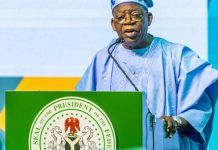The British Pound Sterling traded modestly on Monday, July 10, after a batch of very poor monthly output readings drove it to its worst week in a month, casting doubt on the Bank of England’s surprise warnings that it is on the verge of raising borrowing costs.
A strong U.S. payrolls report on Friday afternoon added to the pain for the pound after unexpected falls in already very slow UK construction, manufacturing and industrial output.
That raises the stakes around UK wage and unemployment numbers this week; poor readings could further undermine the credibility of BoE officials’ statements around possible rate hikes in the coming months.
“Little sign of wage growth could trigger a BoE reality check,” said ING analyst Viraj Patel, also pointing to a speech by Deputy Governor Ben Broadbent on Tuesday as a potential mover for the pound.
“With markets still pricing in around a 45 percent chance of a rate hike later this year, we continue to believe that a dovish re-pricing – and a move lower in short-term UK rates – remains the key downside risk to sterling in the near-term,” he said.
The pound was virtually unchanged from closing levels in New York on Friday at $1.2890. It dipped by less than 0.1 percent to 88.52 pence per euro.
The outlook for the economy and BoE rates have dominated the month trade since a shocking electoral setback for Prime Minister Theresa May on June 8.
Many companies and investors had begun to believe the worst of the pound’s post-Brexit referendum sell-off was now behind them. But there are also nerves that a weak government and the impact of a slow departure from Europe on growth and investment leaves the currency exposed over the coming years.
Surveys on Monday showed major companies have curtailed their investment plans and that consumers spent less on their credit cards, Reuters reports.












